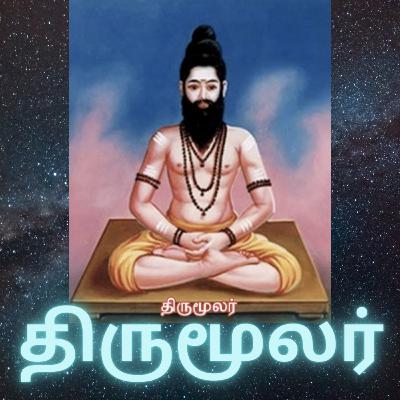Discover Tharun Shiv
Tharun Shiv

Tharun Shiv
Author: Ishaana Shiva Tharun
Subscribed: 0Played: 5Subscribe
Share
© Ishaana Shiva Tharun
Description
Thirumurai | Srimad Bhagavadh Geethai | Carnatic Songs | Sanathan Dharmam | Sounds of Siddhan | Siddhargal | Sri Lalitha Sahasranamam with Meaning in Tamil
New Episodes everyday at 6am and 6pm | Subscribe to get the recent episodes
New Episodes everyday at 6am and 6pm | Subscribe to get the recent episodes
17 Episodes
Reverse
பூழியர் கோன் வெப்பு ஒழித்த புகலியர் கோன் கழல் போற்றி
ஆழி மிசைக் கல் மிதப்பில் அணைந்த பிரான் அடி போற்றி
வாழி திரு நாவலூர் வன்தொண்டர் பதம் போற்றி
ஊழி மலி திரு வாதவூரர் திருத்தாள் போற்றி
- ( உமாபதி சிவம் )
பாண்டிய அரசனின் ஜுரத்தைத் தீர்த்த திருஞான சம்பந்தர் திருவடிகளுக்கு வணக்கம்.
கடல்மேல் ஒரு கல்லே தெப்பமாக மிதந்து கரை அடைந்த திருநாவுக்கரசர் திருவடிகளுக்கு வணக்கம்.
திருநாவலூரில் அவதரித்த சுந்தரர் திருவடிகளுக்கு வணக்கம்.
என்றும் நிலைத்த புகழ் உடைய மாணிக்க வாசகர் திருவடிகளுக்கு வணக்கம்
Composed by the King of Lanka, Ravana, the Shiva Tandava Stotram is one of the most popular Sanskrit Compositions of all time.
Let's listen to the slokam, it's breakdown, the meaning, how to chant
Lalita Sahasranama (lalitāsahasranāma) (Sanskrit: ललिता सहस्रनाम), is a Hindu text from the Brahmanda Purana.The Lalita Sahasranama is the thousand names of the Hindu mother goddess Lalita. It is a sacred text for the Hindu worshippers of the Goddess Lalita Devi, who considered to be a manifestation of the Divine Mother (Shakti), and the text is therefore used in the worship of Durga, Parvati, Kali, Lakshmi, Saraswati, Bhagavati, etc. as well. A principal text of Shakti worshipers, it names the goddess's various attributes in the form of names organized in a hymn. This sahasranama is used in various modes for the worship of the Divine Mother like parayana (recitations), archana, and homa. In this series we will look at the meaning of Sri Lalitha Sahasranamam word by word with the stories and secrets hidden in them. In this video, we will listen about the purva bhagam of Lalitha Sahasranamam. Lalitha Sahasranamam is a very powerful chanting of Devi Sri Lalitha Tripurasundari, describing all the Goddesses and avatars of Sri Adi Parasakthi, the supreme origin. Due to the language constraints which we have in this generation, we have totally lost track of the meaning of these sacred chantings. To help this, Sri Bhaskararaya (1690 - 1785) has written the commentary for this sacred stotram. Sri S.V.Radhakrishna Sastri has written a book in Tamil containing this commentary. Smt Umamaheswari has narrated this complete album with this book as a base. Heartful pranaams and thanks to Sri Kumar Ramanathan for motivating me with the materials necessary for this album. Sri Maathre Namaha
<p>Lalita Sahasranama (lalitāsahasranāma) (Sanskrit: ललिता सहस्रनाम), is a Hindu text from the Brahmanda Purana.The Lalita Sahasranama is the thousand names of the Hindu mother goddess Lalita. It is a sacred text for the Hindu worshippers of the Goddess Lalita Devi, who considered to be a manifestation of the Divine Mother (Shakti), and the text is therefore used in the worship of Durga, Parvati, Kali, Lakshmi, Saraswati, Bhagavati, etc. as well. A principal text of Shakti worshipers, it names the goddess's various attributes in the form of names organized in a hymn. This sahasranama is used in various modes for the worship of the Divine Mother like parayana (recitations), archana, and homa. </p> <br/> <p>In this series we will look at the meaning of Sri Lalitha Sahasranamam word by word with the stories and secrets hidden in them.</p> <br/> <p>In this video, we will listen about the purva bhagam of Lalitha Sahasranamam. Lalitha Sahasranamam is a very powerful chanting of Devi Sri Lalitha Tripurasundari, describing all the Goddesses and avatars of Sri Adi Parasakthi, the supreme origin. Due to the language constraints which we have in this generation, we have totally lost track of the meaning of these sacred chantings. To help this, Sri Bhaskararaya (1690 - 1785) has written the commentary for this sacred stotram. Sri S.V.Radhakrishna Sastri has written a book in Tamil containing this commentary. </p> <br/> <p>Smt Umamaheswari has narrated this complete album with this book as a base. Heartful pranaams and thanks to Sri Kumar Ramanathan for motivating me with the materials necessary for this album.</p> <br/> <p>Sri Maathre Namaha</p>
Lalita Sahasranama (lalitāsahasranāma) (Sanskrit: ललिता सहस्रनाम), is a Hindu text from the Brahmanda Purana.The Lalita Sahasranama is the thousand names of the Hindu mother goddess Lalita. It is a sacred text for the Hindu worshippers of the Goddess Lalita Devi, who considered to be a manifestation of the Divine Mother (Shakti), and the text is therefore used in the worship of Durga, Parvati, Kali, Lakshmi, Saraswati, Bhagavati, etc. as well. A principal text of Shakti worshipers, it names the goddess's various attributes in the form of names organized in a hymn. This sahasranama is used in various modes for the worship of the Divine Mother like parayana (recitations), archana, and homa.
In this series we will look at the meaning of Sri Lalitha Sahasranamam word by word with the stories and secrets hidden in them.
In this video, we will listen about the purva bhagam of Lalitha Sahasranamam. Lalitha Sahasranamam is a very powerful chanting of Devi Sri Lalitha Tripurasundari, describing all the Goddesses and avatars of Sri Adi Parasakthi, the supreme origin. Due to the language constraints which we have in this generation, we have totally lost track of the meaning of these sacred chantings. To help this, Sri Bhaskararaya (1690 - 1785) has written the commentary for this sacred stotram. Sri S.V.Radhakrishna Sastri has written a book in Tamil containing this commentary.
Smt Umamaheswari has narrated this complete album with this book as a base. Heartful pranaams and thanks to Sri Kumar Ramanathan for motivating me with the materials necessary for this album.
Sri Maathre Namaha
Lalita Sahasranama (lalitāsahasranāma) (Sanskrit: ललिता सहस्रनाम), is a Hindu text from the Brahmanda Purana.The Lalita Sahasranama is the thousand names of the Hindu mother goddess Lalita. It is a sacred text for the Hindu worshippers of the Goddess Lalita Devi, who considered to be a manifestation of the Divine Mother (Shakti), and the text is therefore used in the worship of Durga, Parvati, Kali, Lakshmi, Saraswati, Bhagavati, etc. as well. A principal text of Shakti worshipers, it names the goddess's various attributes in the form of names organized in a hymn. This sahasranama is used in various modes for the worship of the Divine Mother like parayana (recitations), archana, and homa.
In this series we will look at the meaning of Sri Lalitha Sahasranamam word by word with the stories and secrets hidden in them.
In this video, we will listen about the purva bhagam of Lalitha Sahasranamam. Lalitha Sahasranamam is a very powerful chanting of Devi Sri Lalitha Tripurasundari, describing all the Goddesses and avatars of Sri Adi Parasakthi, the supreme origin. Due to the language constraints which we have in this generation, we have totally lost track of the meaning of these sacred chantings. To help this, Sri Bhaskararaya (1690 - 1785) has written the commentary for this sacred stotram. Sri S.V.Radhakrishna Sastri has written a book in Tamil containing this commentary.
Smt Umamaheswari has narrated this complete album with this book as a base. Heartful pranaams and thanks to Sri Kumar Ramanathan for motivating me with the materials necessary for this album.
Sri Maathre Namaha
Lalita Sahasranama (lalitāsahasranāma) (Sanskrit: ललिता सहस्रनाम), is a Hindu text from the Brahmanda Purana.The Lalita Sahasranama is the thousand names of the Hindu mother goddess Lalita. It is a sacred text for the Hindu worshippers of the Goddess Lalita Devi, who considered to be a manifestation of the Divine Mother (Shakti), and the text is therefore used in the worship of Durga, Parvati, Kali, Lakshmi, Saraswati, Bhagavati, etc. as well. A principal text of Shakti worshipers, it names the goddess's various attributes in the form of names organized in a hymn. This sahasranama is used in various modes for the worship of the Divine Mother like parayana (recitations), archana, and homa.
In this series we will look at the meaning of Sri Lalitha Sahasranamam word by word with the stories and secrets hidden in them.
In this video, we will listen about the history of Lalitha Sahasranamam. Lalitha Sahasranamam is a very powerful chanting of Devi Sri Lalitha Tripurasundari, describing all the Goddesses and avatars of Sri Adi Parasakthi, the supreme origin. Due to the language constraints which we have in this generation, we have totally lost track of the meaning of these sacred chantings. To help this, Sri Bhaskararaya (1690 - 1785) has written the commentary for this sacred stotram. Sri S.V.Radhakrishna Sastri has written a book in Tamil containing this commentary.
Smt Umamaheswari has narrated this complete album with this book as a base. Heartful pranaams and thanks to Sri Kumar Ramanathan for motivating me with the materials necessary for this album.
Sri Maathre Namaha
Lalita Sahasranama (lalitāsahasranāma) (Sanskrit: ललिता सहस्रनाम), is a Hindu text from the Brahmanda Purana.The Lalita Sahasranama is the thousand names of the Hindu mother goddess Lalita. It is a sacred text for the Hindu worshippers of the Goddess Lalita Devi, who considered to be a manifestation of the Divine Mother (Shakti), and the text is therefore used in the worship of Durga, Parvati, Kali, Lakshmi, Saraswati, Bhagavati, etc. as well. A principal text of Shakti worshipers, it names the goddess's various attributes in the form of names organized in a hymn. This sahasranama is used in various modes for the worship of the Divine Mother like parayana (recitations), archana, and homa.
In this series we will look at the meaning of Sri Lalitha Sahasranamam word by word with the stories and secrets hidden in them.
In this video, we will listen about the history of Lalitha Sahasranamam. Lalitha Sahasranamam is a very powerful chanting of Devi Sri Lalitha Tripurasundari, describing all the Goddesses and avatars of Sri Adi Parasakthi, the supreme origin. Due to the language constraints which we have in this generation, we have totally lost track of the meaning of these sacred chantings. To help this, Sri Bhaskararaya (1690 - 1785) has written the commentary for this sacred stotram. Sri S.V.Radhakrishna Sastri has written a book in Tamil containing this commentary.
Smt Umamaheswari has narrated this complete album with this book as a base. Heartful pranaams and thanks to Sri Kumar Ramanathan for motivating me with the materials necessary for this album.
Sri Maathre Namaha
Lalita Sahasranama (lalitāsahasranāma) (Sanskrit: ललिता सहस्रनाम), is a Hindu text from the Brahmanda Purana.The Lalita Sahasranama is the thousand names of the Hindu mother goddess Lalita. It is a sacred text for the Hindu worshippers of the Goddess Lalita Devi, who considered to be a manifestation of the Divine Mother (Shakti), and the text is therefore used in the worship of Durga, Parvati, Kali, Lakshmi, Saraswati, Bhagavati, etc. as well. A principal text of Shakti worshipers, it names the goddess's various attributes in the form of names organized in a hymn. This sahasranama is used in various modes for the worship of the Divine Mother like parayana (recitations), archana, and homa.
In this series we will look at the meaning of Sri Lalitha Sahasranamam word by word with the stories and secrets hidden in them.
In this video, we will listen about the history of Lalitha Sahasranamam. Lalitha Sahasranamam is a very powerful chanting of Devi Sri Lalitha Tripurasundari, describing all the Goddesses and avatars of Sri Adi Parasakthi, the supreme origin. Due to the language constraints which we have in this generation, we have totally lost track of the meaning of these sacred chantings. To help this, Sri Bhaskararaya (1690 - 1785) has written the commentary for this sacred stotram. Sri S.V.Radhakrishna Sastri has written a book in Tamil containing this commentary.
Smt Umamaheswari has narrated this complete album with this book as a base. Heartful pranaams and thanks to Sri Kumar Ramanathan for motivating me with the materials necessary for this album.
Sri Maathre Namaha
Lalita Sahasranama (lalitāsahasranāma) (Sanskrit: ललिता सहस्रनाम), is a Hindu text from the Brahmanda Purana.The Lalita Sahasranama is the thousand names of the Hindu mother goddess Lalita. It is a sacred text for the Hindu worshippers of the Goddess Lalita Devi, who considered to be a manifestation of the Divine Mother (Shakti), and the text is therefore used in the worship of Durga, Parvati, Kali, Lakshmi, Saraswati, Bhagavati, etc. as well. A principal text of Shakti worshipers, it names the goddess's various attributes in the form of names organized in a hymn. This sahasranama is used in various modes for the worship of the Divine Mother like parayana (recitations), archana, and homa.
In this series we will look at the meaning of Sri Lalitha Sahasranamam word by word with the stories and secrets hidden in them.
In this video, we will listen about the history of Lalitha Sahasranamam. Lalitha Sahasranamam is a very powerful chanting of Devi Sri Lalitha Tripurasundari, describing all the Goddesses and avatars of Sri Adi Parasakthi, the supreme origin. Due to the language constraints which we have in this generation, we have totally lost track of the meaning of these sacred chantings. To help this, Sri Bhaskararaya (1690 - 1785) has written the commentary for this sacred stotram. Sri S.V.Radhakrishna Sastri has written a book in Tamil containing this commentary.
Smt Umamaheswari has narrated this complete album with this book as a base. Heartful pranaams and thanks to Sri Kumar Ramanathan for motivating me with the materials necessary for this album.
Sri Maathre Namaha
Lalita Sahasranama (lalitāsahasranāma) (Sanskrit: ललिता सहस्रनाम), is a Hindu text from the Brahmanda Purana.The Lalita Sahasranama is the thousand names of the Hindu mother goddess Lalita. It is a sacred text for the Hindu worshippers of the Goddess Lalita Devi, who considered to be a manifestation of the Divine Mother (Shakti), and the text is therefore used in the worship of Durga, Parvati, Kali, Lakshmi, Saraswati, Bhagavati, etc. as well. A principal text of Shakti worshipers, it names the goddess's various attributes in the form of names organized in a hymn. This sahasranama is used in various modes for the worship of the Divine Mother like parayana (recitations), archana, and homa.
In this series we will look at the meaning of Sri Lalitha Sahasranamam word by word with the stories and secrets hidden in them.
In this video, we will listen about the history of Lalitha Sahasranamam. Lalitha Sahasranamam is a very powerful chanting of Devi Sri Lalitha Tripurasundari, describing all the Goddesses and avatars of Sri Adi Parasakthi, the supreme origin. Due to the language constraints which we have in this generation, we have totally lost track of the meaning of these sacred chantings. To help this, Sri Bhaskararaya (1690 - 1785) has written the commentary for this sacred stotram. Sri S.V.Radhakrishna Sastri has written a book in Tamil containing this commentary.
Smt Umamaheswari has narrated this complete album with this book as a base. Heartful pranaams and thanks to Sri Kumar Ramanathan for motivating me with the materials necessary for this album.
Sri Maathre Namaha
This is an audio where Mrs. Umamaheswari Speaks about Maya and how we can come out of it. Maha Periyava, Kanchi has mentioned a Lot about Maya in his Katturaigal.
Jaya Jaya Shankara, Hara Hara Shankara.
Ram Ram
A story of Patanjali Munivar.
He is considered to be the avatar of Adisheshan.
This is one of the story where Patanjali munivar interacts with his disciples.
This story also brings in Vyaghrapadhar. We will also refer Chidambaram.
How to perform Patanjali Maharishi Poojai
Nandhi arulPetra Nadharai Naadinom
Nandhigal Nalvar Siva Yoga MaaMuni
Mandru thozhuda Patañjali Vyakramar
Endrivar Ennodu (Thirumoolar) Enmarumaame
Meaning
We sought the feet of the God who graced Nandikesvara
The Four Nandhis,
Sivayoga Muni, Patañjali, Vyaghrapada and I (Thirumoolar)
We were these eight.
ஓரு சமயம் ஆதிசேஷன் சிவனின் ஆனந்த தாண்டவத்தைக் காணவேண்டுமென கயிலை சென்று சிவனிடம் தன் ஆசையை வெளிப்படுத்தினார். அதற்கு சிவன் பூலோகத்தில், தில்லை வனத்தில் தான் காட்சியளிக்க உள்ளதாகவும், அதைக் காண ஏதுவாக அத்திரி மகசிரியின் மகனாக வளர்ந்து வருமாறு ஆதிசேசனை பணிக்கிறார். அத்திரி மகரிசி ஆற்றில் சந்தியா வந்தனம் செய்யும்போது ஐந்து முகங்களுள்ள ஒரு குழந்தையாக அவர் கைகளில் வந்து விழுகிறார். மகரிசியும் அந்தக் குழந்தையை எடுத்து பதஞ்சலி என்ற பெயரிட்டு வளர்க்கிறார்.
அத்திரி மகசிசியும், புலிகால் முனிவரும் சிவனின் ஆனந்த தாண்டவத்தைக் காண விருப்பம் கொண்டு தவம் செய்கின்றனர். அப்போது பதஞ்சலியும் அவர்களுடன் சேர்ந்து தவமியற்றினார். இவர்களின் தவத்தற்கு இரங்கிய ஈசன் ஒரு வியாழக் கிழமையுடன் கூடிய தைப்பூச நாளில் இவர்களுக்கு ஆனந்த தாண்டவத்தைக் காட்டி அருள்கிறார்.
இந்த பதஞ்சலி முனிவர் ஒரே நேரத்தில் ஆயிரம் சீடர்களுக்கு ஆயிரம் தலைகளுடன் திரை மறைவில் இருந்து வியாகரண மகாபாஷ்யத்தைக் கூறினார் என்று தொன்மங்கள் குறிப்பிடுகின்றன.
thiruchitrambalam
In this video we will hear about Dandi Adigal Nayanar story in tamil
We will listen about his History
The story of what he did in his early life
How he served at temples?
How he got his eyesight back?
Siva Siva | Namashivayam | Shambho Mahadeva
தண்டியடிகள் நாயனார் என்பவர் சைவ சமயத்தவர்களால் பெரிதும் மதிக்கப்படும் அறுபத்து மூன்று நாயன்மார்களில் ஒருவர் ஆவார. இவர் திருவாரூரில் பிறந்த பெரும் பேறுடையவர். இவர் ‘இறைவன் திருவடிகளை மனத்துட் கொண்டு நோக்கும் அகநோக்கு ஒன்றே போதும்’ என்று கருத்தினை வலியுறுத்துவது போன்று, பிறக்கும்போதே பார்வையை இழந்திருந்தார். தண்டியடிகள் திருவாரூர்ப் பூங்கோயிலில் தேவாசிரியமண்டபத்தினுள் அடியார்களை வணங்கிவிட்டு, இறைவன் முன் வலம் வந்து, காதலாகி, நமச்சிவாய அன்புடையவராய்த் திருத்தொண்டுகள் பல செய்து வந்தார். . The podcast is in Tamil.
Thiruchitrambalam Siva Chidambaram
Thiru Angamaalai - Stanza 3 and 4
Song with Meaning
Thalam: Thirupoonthurutthi
அ௫ளியவர் : திருநாவுக்கரசர்
திருமுறை : நான்காம் திருமுறை
பண் : சாதாரி
சிறப்பு: திருஅங்கமாலை
Roopaka Thaalam
பாடல்-3
செவிகாள் கேண்மின்களோ/ - சிவன் எம்மிறை/ செம்பவள/
எரி போல் மேனிப்/ பிரான் திறம்/ எப்போதும்/ செவிகாள்/ கேண்மின்களோ/
மூக்கே நீ முரலாய்/ - முதுகாடு உறை/ முக்கணனை/
வாக்கே நோக்கிய/ மங்கை மணாளனை/ மூக்கே நீ/ முரலாய்./
Narrated by Smt. Umamaheswari & Sung by Tharun Shiv.
Thiruchitrambalam | Sivachidambaram
In this video we will hear about Thirumoolar Siddhar
We will listen about his History
The story of how we travelled to south India
The story behind how He got his name Thirumoolar
How He wrote the Thirumandhiram that consists of 3000 songs
Siva Siva | Namashivayam | Shambho Mahadeva
Thirumoolar is the 29th Nayanar. Nambiran thirumoolar adiyarkum adiyen || in the line that can be found in Sundara moorthy swamigal's Thirutthonda thogai. The podcast is in Tamil.
Thiruchitrambalam Siva Chidambaram
Thiru Angamaalai - Stanza 1 and 2
Song with Meaning
Thalam: Thirupoonthurutthi
அ௫ளியவர் : திருநாவுக்கரசர்
திருமுறை : நான்காம் திருமுறை
பண் : சாதாரி
சிறப்பு: திருஅங்கமாலை
Roopaka Thaalam
தலையே நீவணங்காய் - தலை
மாலை தலைக்கணிந்து
தலையா லேபலி தேருந் தலைவனைத்
தலையே நீவணங்காய். 1
கண்காள் காண்மின்களோ - கடல்
நஞ்சுண்ட கண்டன்றன்னை
எண்டோ ள் வீசிநின் றாடும் பிரான்றன்னைக்
கண்காள் காண்மின்களோ. 2
Meaning of stanza 1:
Oh my dear head, Bow down to Sivan, the one who is wearing a garland made of heads, and one who is outstretching alms in a bowl made out of skull.
Meaning of stanza 2:
Oh my dear eyes, Look at Sivan, the one who's throat is blue because of drinking the poison that came out from the Paar Kadal ( the ocean that was churned ) and one who dances with 8 skins wrapped around.
Narrated by Smt. Umamaheswari & Sung by Tharun Shiv.
Thiruchitrambalam | Sivachidambaram





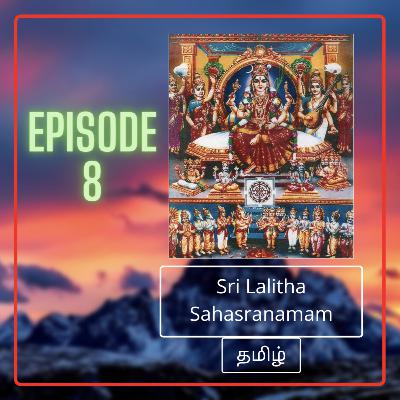
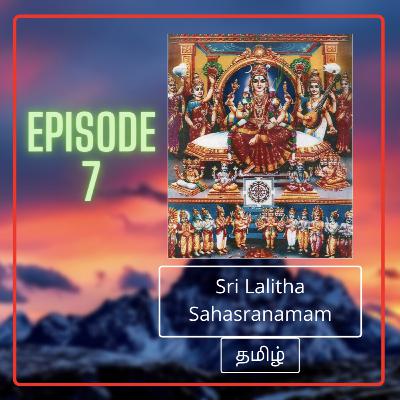

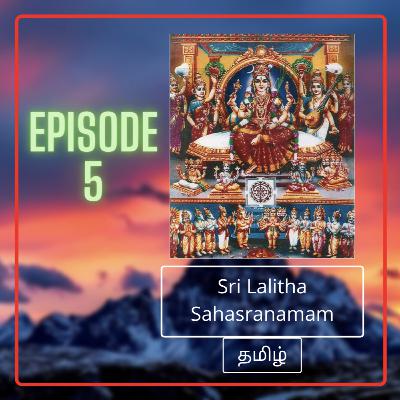
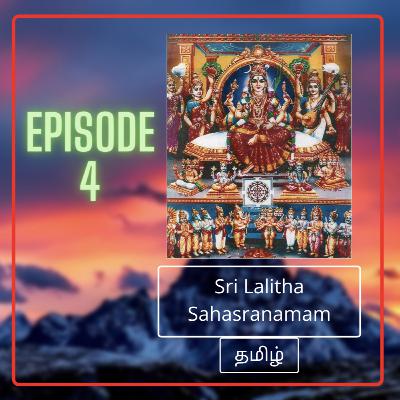

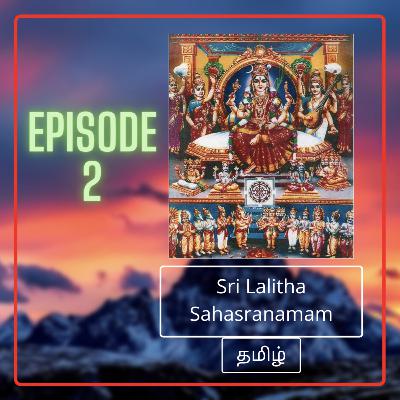
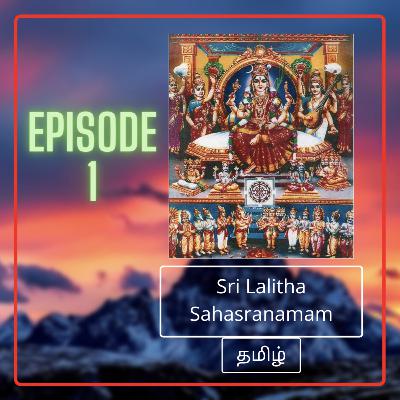
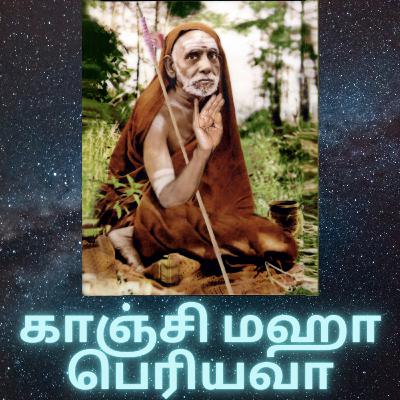


![Thiru Angamaalai [ 3, 4 ] | திரு அங்க மாலை திருப்பதிகம் | 4rth Thirumurai | Thirunaavukkarasar | By Uma & Tharun Thiru Angamaalai [ 3, 4 ] | திரு அங்க மாலை திருப்பதிகம் | 4rth Thirumurai | Thirunaavukkarasar | By Uma & Tharun](https://s3.castbox.fm/04/eb/25/dd8b06c7f41a96d06de3d8a58349500e2b_scaled_v1_400.jpg)
